Judging from my recent experiences, this must be The Year of the Crane. Upon my arrival in Malheur last week, I was met by a field full of Sandhill Cranes, quite a change from past years when I was lucky to see one or two cranes on my whole trip.
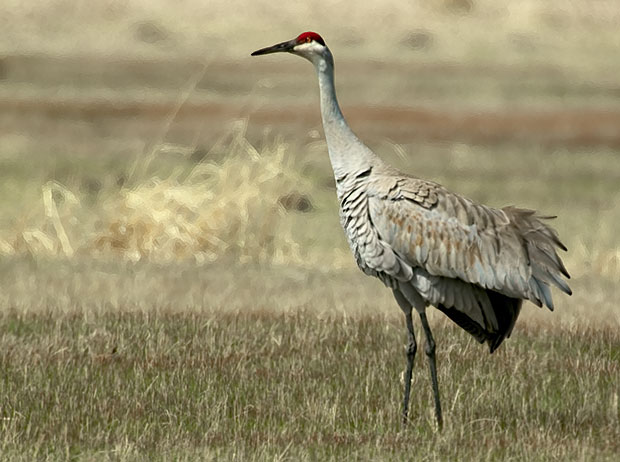
As a result, I had more time to actually observe their behavior, which, in turn, raised questions I’ve never had before, like, what the heck they were eating
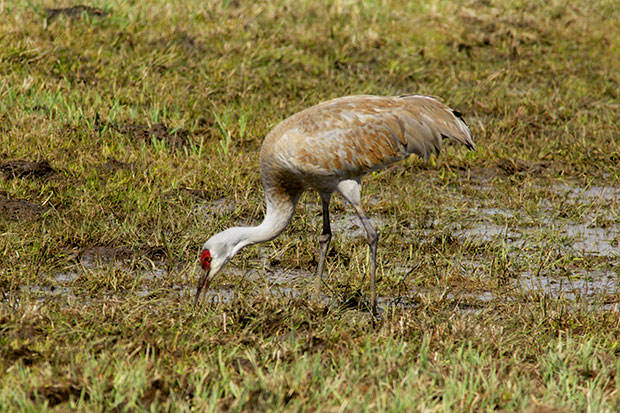
when they drove their beaks into the wet muddy soil? As it turns out, they are omnivores and eat almost anything, though I think in this case they were probably eating tubers in the mud.
On the second day of my trip I was driving through cattle country looking for raptors when I noticed Sandhill Cranes browsing with herds of cattle.
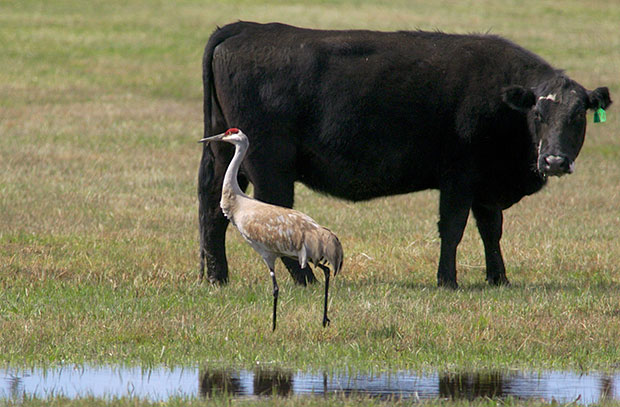
Sandhill Cranes are often described as “very large” birds, and looking through binoculars or a telephoto lens they look huge, but as this photo reveals, “very large” is a relative term, isn’t it?
My trip to Malheur ended the same way it began, taking pictures of the Sandhill Cranes in the flooded fields just south of Burns. This pair of cranes held my attention the longest, though, because of how closely they stayed together,
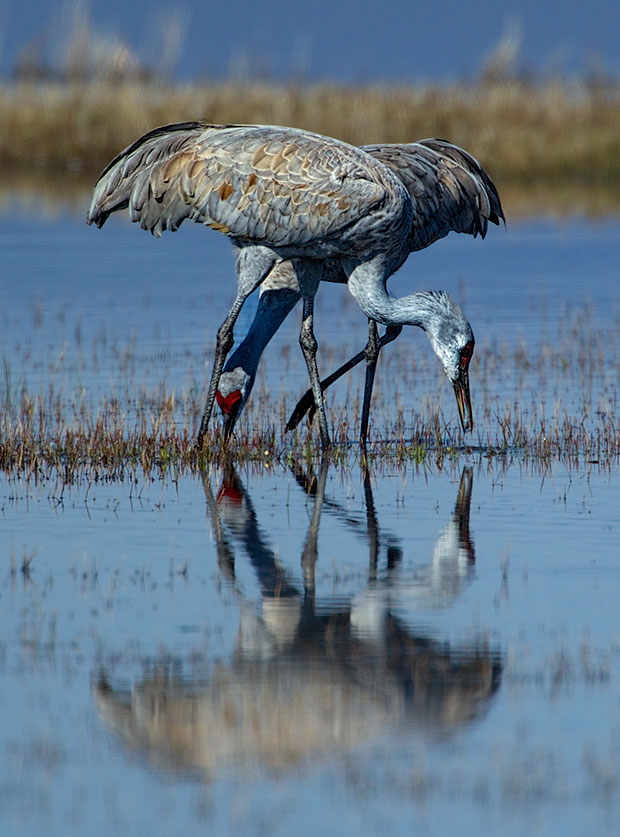
at times almost appearing as a single, two-headed bird, impossible to separate.
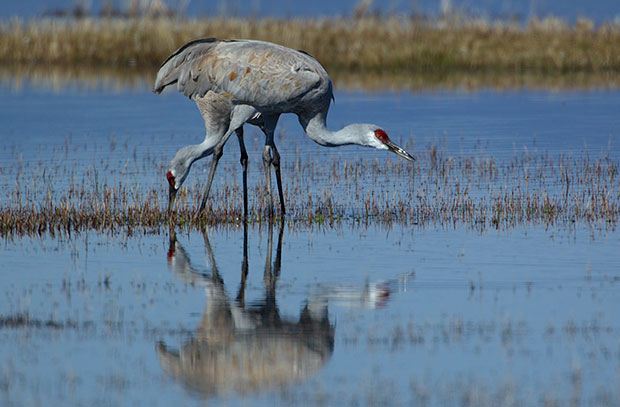
The morning light also gave a quite different look than the late afternoon light did. Perhaps the blue reflections off the water made them seem “ bluer,” too, Even the crane’s white faced appeared blue in this shot, but it made me wonder why the colors varied so much in the shots I had gotten of different cranes. Although Sandhill Cranes are “slate-gray” birds, they apparently preen themselves with mud, giving themselves a rusty sheen, which is certainly more noticeable in the first shots in this entry.
Although I don’t think I really like any of these shots quite as much as the shots I took earlier of the Sandhill Cranes flying overhead at Ridgefield, but it was definitely fun to get a closer look at them and beginning to understand more about them.
